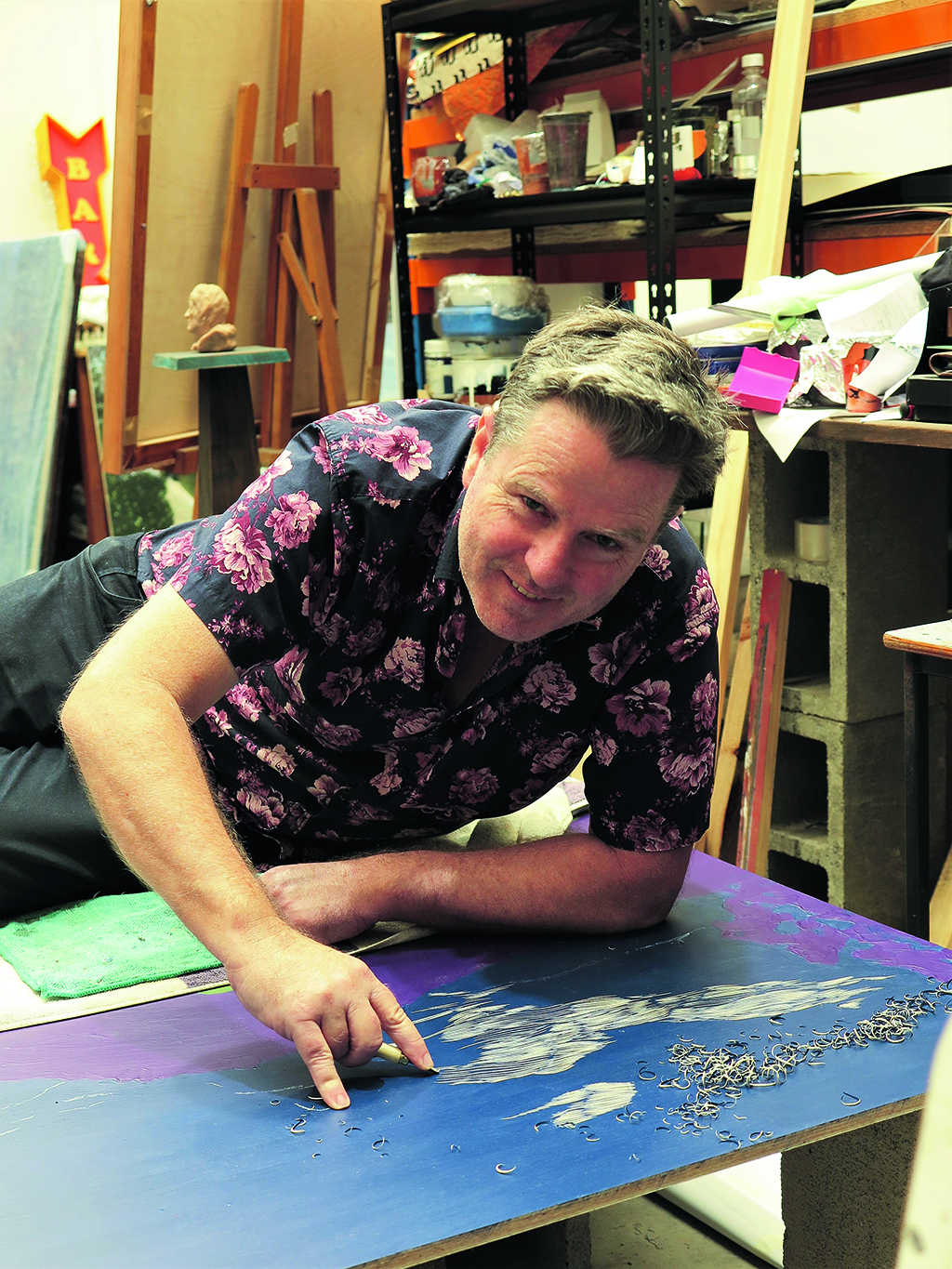
The Green Man & Graham Wilson
This man is carving clouds. In a cramped studio in an old warehouse in Newcastle on a Sunday morning Graham Wilson is lying on a blanket on a large sheet of navy-blue-painted plywood. He is in another world, at work, intensely focused.
This is an artist continuing on a path he was attracted to more than thirty years ago – and still it brings him an inexplicable kind of peace. He is generating, sliver by sliver, a work of art that starts with a drawing on a large sheet of plywood.
Over many hours of painstaking attention to every detail there develops, well, it could be a panoramic vista in a wild Tasmanian landscape, a cathedral in moonlight, or perhaps a series of large panels depicting a mythologic vision of progress in the city that is his home.
The warehouse, tucked away in Hamilton North, is nearly impossible to find. Once I reach the entrance, there’s a labyrinth of passageways and cave-like studios each of which expresses the idiosyncrasies of the artist ensconced within. I am in the womb of The Creator Incubator – the TCI – a sort of commune of artistic incasts.
Graham is my diligent guide on a tour of this extraordinary habitat, and eventually, more than thirty art-caves later, we are back to Graham’s own space.
This art-hub is all new to me but Graham’s work isn’t. For a significant birthday back in the mid-nineties I was privileged to receive as a gift a framed woodblock print, about a meter by one-and-a-half, one part of a multi-panel work, depicting a cityscape in a process of transformation.
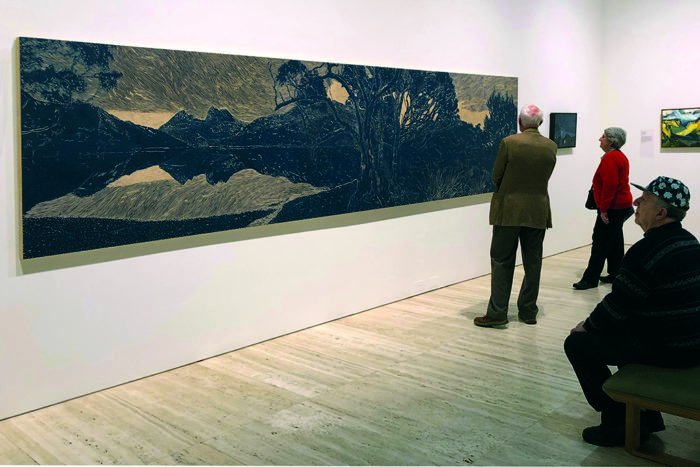

It was clear the artist saw some kind of apocalypse ahead, envisaging a Green Man, a saviour enlightenment that would turn a tide and bring about a sustaining balance, for a city, for a planet.
Who could express all this so presciently, way back then?
On a memorable weekend, a decade later I met Graham, his wife Jane and their three children, at Wangat Lodge in the Barrington foothills.
Here, his entire Green Man print was (and still is) prominently hanging in the main hall. Graham had transported with him all eight of the plywood panels, depicting, in a medieval style, his story. Now before me for the first time there was presented the whole epic tale: the Green Man of European mythology entering the city gates of Newcastle and, woodcut by meticulously crafted woodcut, initiating societal change and a shift in the way a culture and nature interacted.
I say this in absolute honesty: no work of art has ever so engaged me and so moved me. Now in Graham’s studio space, sandwiched behind other large woodcuts, are all the Green Man panels. I am to be in their presence again. They were never sold. Graham will not separate them, for the work is a magical story, and removal of a single chapter would break the spell. At the end of our meeting we pack them back into a silence that begs opportunity to share its message widely.
In the late 1980s and into the 1990s Graham was a print-making student, first at Newcastle TAFE, then in the Visual Arts Department at University of Newcastle.
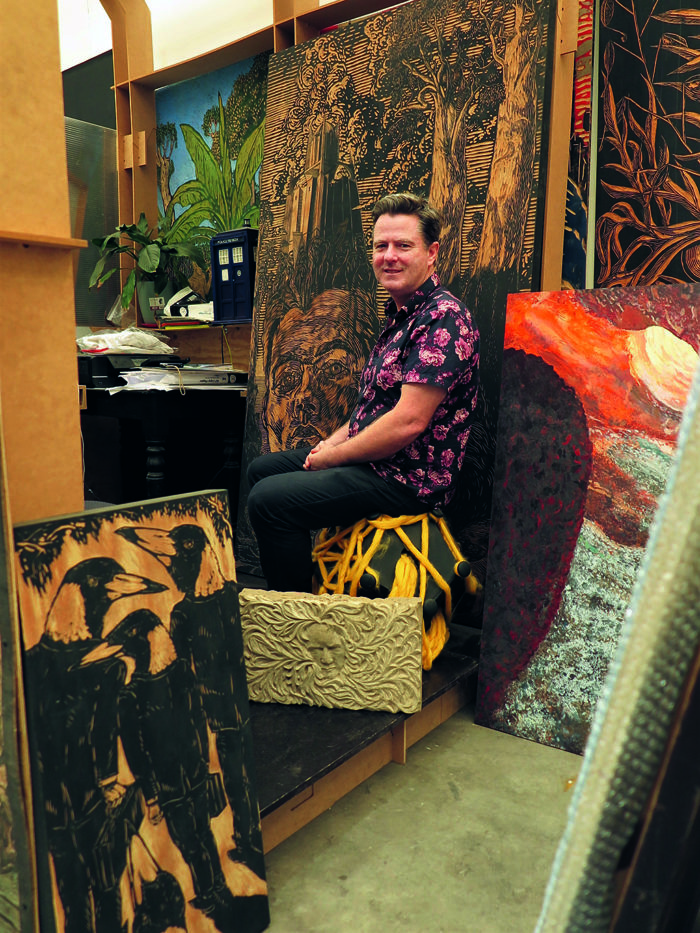
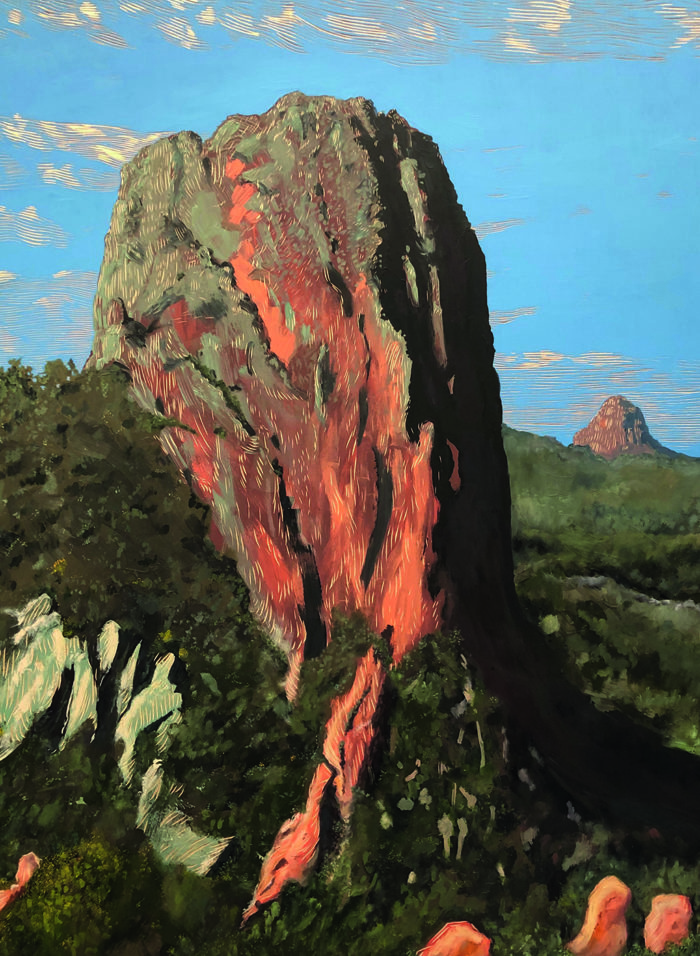
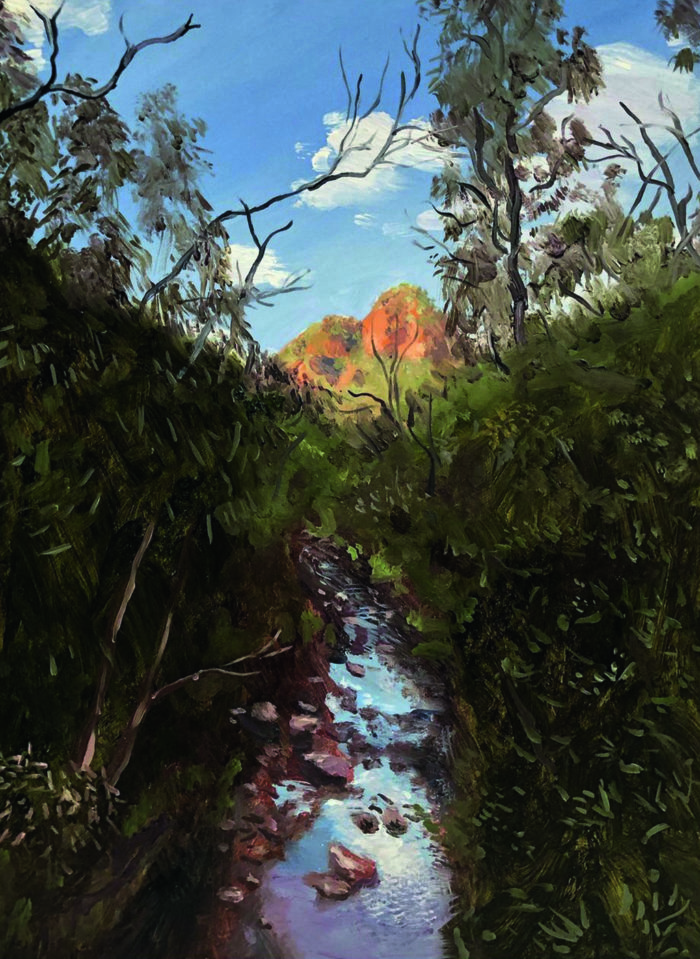
“I completed my Bachelor of Arts in Visual Arts. I then embarked on a Post-Graduate Diploma. It demanded the presentation of a major work. I was drawn to the medieval style of woodcuts that could portray stories without the need for people to read words.
“I had come across a book in the university library about the Green Man. His leafy face features widely in stone carvings in churches all across Britain and Europe going back to medieval times. “Whether of Christian or pagan origin, to me it fitted the idea of a deity hiding in nature.”
Graham’s inventive mind brought the Green Man into a Newcastle city-scape with clearly recognisable buildings (Customs House, Christ Church Cathedral, the Roundhouse…). The story begins in a city with industry at its heart. The Green Man arrives at the city gates, and an imaginative tale progresses through six story panels. The final panel depicts a verdant city powered by wind.
Along the way many delights have been incorporated into the narrative, among them parking meters, a dragon car, a supermarket trolley, farts and excrement, bags of gold, a skull, a Volkswagen, a boy with an owl. With expansive introductory panel and closing panels, it is both entertaining and rich in symbolism and meaning.
Read more about Graham and his artwork in the Autumn Edition of Hunter & Coastal Lifestyle Magazine or subscribe here.
Story and photography by Ken Rubeli

